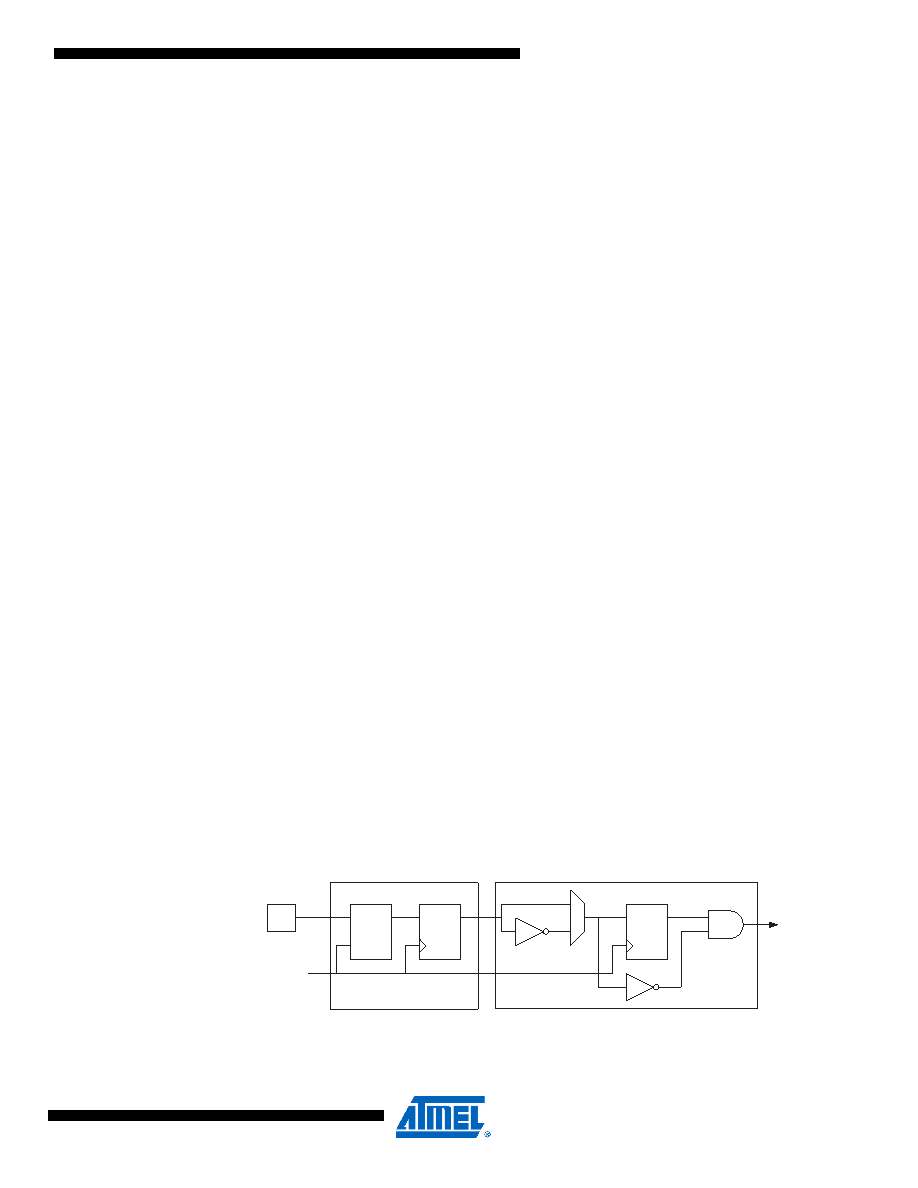- 您现在的位置:买卖IC网 > PDF目录79629 > IS80C52CXXX-16SHXXX:R (ATMEL CORP) 8-BIT, MROM, 16 MHz, MICROCONTROLLER, PQCC44 PDF资料下载
参数资料
| 型号: | IS80C52CXXX-16SHXXX:R |
| 厂商: | ATMEL CORP |
| 元件分类: | 微控制器/微处理器 |
| 英文描述: | 8-BIT, MROM, 16 MHz, MICROCONTROLLER, PQCC44 |
| 封装: | PLASTIC, LCC-44 |
| 文件页数: | 10/392页 |
| 文件大小: | 6486K |
第1页第2页第3页第4页第5页第6页第7页第8页第9页当前第10页第11页第12页第13页第14页第15页第16页第17页第18页第19页第20页第21页第22页第23页第24页第25页第26页第27页第28页第29页第30页第31页第32页第33页第34页第35页第36页第37页第38页第39页第40页第41页第42页第43页第44页第45页第46页第47页第48页第49页第50页第51页第52页第53页第54页第55页第56页第57页第58页第59页第60页第61页第62页第63页第64页第65页第66页第67页第68页第69页第70页第71页第72页第73页第74页第75页第76页第77页第78页第79页第80页第81页第82页第83页第84页第85页第86页第87页第88页第89页第90页第91页第92页第93页第94页第95页第96页第97页第98页第99页第100页第101页第102页第103页第104页第105页第106页第107页第108页第109页第110页第111页第112页第113页第114页第115页第116页第117页第118页第119页第120页第121页第122页第123页第124页第125页第126页第127页第128页第129页第130页第131页第132页第133页第134页第135页第136页第137页第138页第139页第140页第141页第142页第143页第144页第145页第146页第147页第148页第149页第150页第151页第152页第153页第154页第155页第156页第157页第158页第159页第160页第161页第162页第163页第164页第165页第166页第167页第168页第169页第170页第171页第172页第173页第174页第175页第176页第177页第178页第179页第180页第181页第182页第183页第184页第185页第186页第187页第188页第189页第190页第191页第192页第193页第194页第195页第196页第197页第198页第199页第200页第201页第202页第203页第204页第205页第206页第207页第208页第209页第210页第211页第212页第213页第214页第215页第216页第217页第218页第219页第220页第221页第222页第223页第224页第225页第226页第227页第228页第229页第230页第231页第232页第233页第234页第235页第236页第237页第238页第239页第240页第241页第242页第243页第244页第245页第246页第247页第248页第249页第250页第251页第252页第253页第254页第255页第256页第257页第258页第259页第260页第261页第262页第263页第264页第265页第266页第267页第268页第269页第270页第271页第272页第273页第274页第275页第276页第277页第278页第279页第280页第281页第282页第283页第284页第285页第286页第287页第288页第289页第290页第291页第292页第293页第294页第295页第296页第297页第298页第299页第300页第301页第302页第303页第304页第305页第306页第307页第308页第309页第310页第311页第312页第313页第314页第315页第316页第317页第318页第319页第320页第321页第322页第323页第324页第325页第326页第327页第328页第329页第330页第331页第332页第333页第334页第335页第336页第337页第338页第339页第340页第341页第342页第343页第344页第345页第346页第347页第348页第349页第350页第351页第352页第353页第354页第355页第356页第357页第358页第359页第360页第361页第362页第363页第364页第365页第366页第367页第368页第369页第370页第371页第372页第373页第374页第375页第376页第377页第378页第379页第380页第381页第382页第383页第384页第385页第386页第387页第388页第389页第390页第391页第392页

107
2552K–AVR–04/11
ATmega329/3290/649/6490
15. Timer/Counter0 and Timer/Counter1 Prescalers
Timer/Counter1 and Timer/Counter0 share the same prescaler module, but the Timer/Counters
can have different prescaler settings. The description below applies to both Timer/Counter1 and
Timer/Counter0.
15.0.1
Internal Clock Source
The Timer/Counter can be clocked directly by the system clock (by setting the CSn2:0 = 1). This
provides the fastest operation, with a maximum Timer/Counter clock frequency equal to system
clock frequency (f
CLK_I/O). Alternatively, one of four taps from the prescaler can be used as a
clock source. The prescaled clock has a frequency of either f
CLK_I/O/8, fCLK_I/O/64, fCLK_I/O/256, or
f
CLK_I/O/1024.
15.0.2
Prescaler Reset
The prescaler is free running, i.e., operates independently of the Clock Select logic of the
Timer/Counter, and it is shared by Timer/Counter1 and Timer/Counter0. Since the prescaler is
not affected by the Timer/Counter’s clock select, the state of the prescaler will have implications
for situations where a prescaled clock is used. One example of prescaling artifacts occurs when
the timer is enabled and clocked by the prescaler (6 > CSn2:0 > 1). The number of system clock
cycles from when the timer is enabled to the first count occurs can be from 1 to N+1 system
clock cycles, where N equals the prescaler divisor (8, 64, 256, or 1024).
It is possible to use the prescaler reset for synchronizing the Timer/Counter to program execu-
tion. However, care must be taken if the other Timer/Counter that shares the same prescaler
also uses prescaling. A prescaler reset will affect the prescaler period for all Timer/Counters it is
connected to.
15.0.3
External Clock Source
An external clock source applied to the T1/T0 pin can be used as Timer/Counter clock
(clk
T1/clkT0). The T1/T0 pin is sampled once every system clock cycle by the pin synchronization
logic. The synchronized (sampled) signal is then passed through the edge detector. Figure 15-1
shows a functional equivalent block diagram of the T1/T0 synchronization and edge detector
logic. The registers are clocked at the positive edge of the internal system clock (clk
I/O). The latch
is transparent in the high period of the internal system clock.
The edge detector generates one clk
T1/clkT0 pulse for each positive (CSn2:0 = 7) or negative
(CSn2:0 = 6) edge it detects.
Figure 15-1. T1/T0 Pin Sampling
The synchronization and edge detector logic introduces a delay of 2.5 to 3.5 system clock cycles
from an edge has been applied to the T1/T0 pin to the counter is updated.
Tn_sync
(To Clock
Select Logic)
Edge Detector
Synchronization
DQ
LE
DQ
Tn
clk
I/O
相关PDF资料 |
PDF描述 |
|---|---|
| IS80C52CXXX-25:D | 8-BIT, MROM, 25 MHz, MICROCONTROLLER, PQCC44 |
| IS80C52CXXX-30SHXXX:RD | 8-BIT, MROM, 30 MHz, MICROCONTROLLER, PQCC44 |
| IS80C52CXXX-30SHXXX:R | 8-BIT, MROM, 30 MHz, MICROCONTROLLER, PQCC44 |
| IS80C52CXXX-L16:R | 8-BIT, MROM, 16 MHz, MICROCONTROLLER, PQCC44 |
| IS80C52EXXX-16:RD | 8-BIT, MROM, 16 MHz, MICROCONTROLLER, PQCC44 |
相关代理商/技术参数 |
参数描述 |
|---|---|
| IS80C86 | 制造商:Rochester Electronics LLC 功能描述:- Bulk |
| IS80C86-2 | 制造商:Rochester Electronics LLC 功能描述:- Bulk |
| IS80C86-2R2490 | 制造商:Rochester Electronics LLC 功能描述:- Bulk |
| IS80C88 | 制造商:Rochester Electronics LLC 功能描述:- Bulk |
| IS80C88-2 | 制造商:Rochester Electronics LLC 功能描述:- Bulk |
发布紧急采购,3分钟左右您将得到回复。